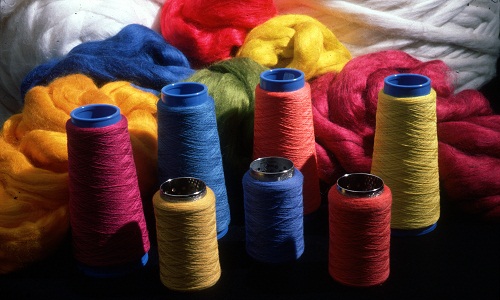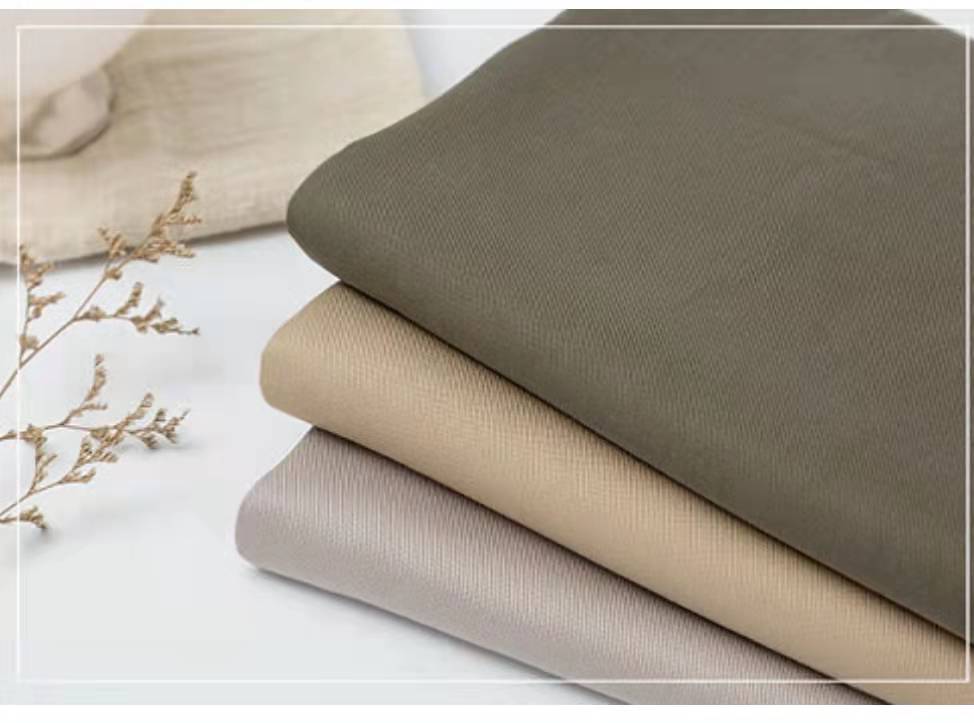FW
During the first three quarters of this year, Pakistan’s readymade garment exports showed an increase of 4.2 per cent in terms of value and 1.56 per cent in term of quantity. During July-March 2016 knitwear production showed a growth of 9.70 per cent. There are about 13,372 circular knitting machines, 10,646 flat knitting machines and 23,241 socks knitting machines spread all over the country. The capacity utilization is around 70 per cent.
There is greater reliance on development of the hosiery industry as there is substantial value addition in the form of knitwear. Besides locally manufactured machinery, liberal imports of machinery under different modes are also being made and capacity based on exports is being developed. Earnings as compared to last year were due to lower commodity prices globally.
The readymade garment industry has emerged as one of the important small scale industries in Pakistan as its products have a higher demand both domestically and globally. The local requirements of readymade garments are almost fully met by this industry. The garment industry is also a good source of providing employment opportunities to a large number of people at a very low capital investment. Export earnings from garments have increased significantly.
The ILC (International Labor Conference) is addressing labor rights deficits in the supply chains of multinational companies. The expansion of global supply chains has been driven by a business model expressly designed to take advantage of low wages and inadequate regulation and enforcement. While more than one fifth of the global workforce has a job in a global supply chain, respect for workers’ rights in supply chains is declining. In the garment industry, there was a 73 per cent drop in the workers’ rights score of the top 20 apparel exporters to the US between 1989 and 2010. At the same time there was a 42 per cent reduction in the price paid for the clothes they produced.
Voluntary corporate social responsibility initiatives have failed. They have not been able to meaningfully improve wages and shorten working hours or to ensure respect for workers’ right to join a union – or their right to a safe workplace.
ILC discussions include working toward a convention on global supply chains to address these deficits. A convention would establish greater accountability for wages and working conditions and clarify the roles and responsibilities of both suppliers and buyers for ensuring labor rights.
"China came out with the 2016 Q1 report of listed printing and dyeing companies recently. The weighted average operating revenue of five representative listed companies reached 362 million Yuan, up 14.89 per cent year on year and net profits scored at 21 million Yuan, up 4.76 per cent year on year. For 6 representative listed dyestuff auxiliary companies, the weighted average operating revenue was 1.034 billion Yuan, down 4.48 per cent on an annual basis and net profits were 101 million Yuan, a fall of 42.77 per cent year on year."

China came out with the 2016 Q1 report of listed printing and dyeing companies recently. The weighted average operating revenue of five representative listed companies reached 362 million Yuan, up 14.89 per cent year on year and net profits scored at 21 million Yuan, up 4.76 per cent year on year. For 6 representative listed dyestuff auxiliary companies, the weighted average operating revenue was 1.034 billion Yuan, down 4.48 per cent on an annual basis and net profits were 101 million Yuan, a fall of 42.77 per cent year on year.
The observation is that the dyestuff auxiliary companies were less prosperous than printing and dyeing companies in Q1 and the growth rate is lower than the latter part.
Performance of printing and dyeing companies

Two among the five listed companies, witnessed operating revenue decrease year on year, while three increased. In Q1, Hangmin remained on top, to increase by 12.51 per cent from last year to reach 675.77 million Yuan. Amid the tight environment policy, capacity of small and medium dyeing plants shrank due to higher dyestuff prices and coming G20 Summit, which was good for the improvement of shares of leading companies. Currently, Hangmin Stock has a capacity of 1 billion meters of printed and dyed fabric and sales ratio is quite good.
MIZUDA and Zhonghe witnessed losses in Q 1, while Hangmin Stock continued to be the top with the net profits of 91.86 million Yuan, up 17.91 per cent. Benefited from higher dyeing fee and good control on cost, net profits increased sharply and the gross profit rate approached 29.44 per cent, up 0.65 per cent from last year.
Dyestuff auxiliary companies dip in turnover Out of the six dyestuff auxiliary companies, three’s operating revenue declined year on year. The leading company, Zhejiang Lonsen witnessed a yearly decrease of 22.58 per cent to reach 2.981 billion Yuan in Q1, as the dyestuff prices began to tumble in Q2, 2015 and rebound after March, 2016. Therefore, the dyestuff prices maintained at a historical low level in Q1, 2016.
At present, Zhejiang Lonsen has the largest dyestuff capacity in China, with 140kt of disperse dyestuff and 70kt of reactive dyestuff per year. In 2015, operating revenue of dyestuff and intermediate accounted for about 70 per cent in total. In 2017, the annual capacity of disperse dyestuff will increase from 140kt to 250kt and in the next 5 years, the capacity of intermediate will rise from 50kt to 150kt.
Net profits move south

A look at the net profits reveal, only one company saw net profits increase year on year and other five companies all decreased sharply. In Q1, net profits of Zhejiang Lonsen reached 304 million Yuan, down 73.95 per cent year on year, as dyestuff prices remained low in the first quarter after the sharp decrease in the second quarter of 2015.
With the tightening of environment policy, high-polluting printing and dyeing and dyestuff companies will be under stringent regulation in general. In printing and dyeing industry, the shutdowns of small and medium plants lead to capacity reduction, so the shares of leading companies are expected to increase further.
Moreover, with the coming G20 Summit, printing and dyeing and dyestuff companies are predicted to be shut down for about 15-20 days. Supply of dyestuff auxiliary is likely to decrease. Though the price increase of dyestuff does not pose positive impact on the Q1 report, the report in Q2 may be better amid the traditional buoyant season.
After hitting lows last year not seen since the Great Depression, California’s 2016 cotton acreage is up at least 26 per cent. Roger Isom, president of the California Cotton Ginners and Growers Association, called the news ‘better than expected.’ Total cotton acreage in the San Joaquin Valley is a little more than 209,000 acres. Kings County continues its top spot at 83,260 acres of cotton planted, an 38 percent increase from last year.
Total cotton planting estimates for the United States range from 9.1 million acres by the National Cotton Council and 9.5 million acres based on U.S. Department of Agriculture (USDA). The higher USDA estimate puts the 2016 U.S. crop 11.4 per cent higher than last year’s cotton crop.
Based on the USDA and NCC projections, national figures show upland cotton acreage projected to be between 17 and 24 per cent higher. Western ELS cotton plantings could range from 5.7 per cent to 11 percent higher, depending on the source of the estimate.
Arizona planting intentions suggest a crop size between 115,000 and 137,000 acres, up from 29-54 per cent. Upland plantings in the Southeast are projected down 5.1 per cent based on estimates by both organisations. The Mid-South could plant anywhere from 25 to 45 per cent more cotton this year. The Southwest could plant anywhere from 6.1 to 11.2 per cent.
Facing an onslaught of imported undervalued Chinese fabrics, there is some good news for textile manufacturers in the country's largest man-made fabric (MMF) hub in Surat. The government is in the process of imposing anti-subsidy duty on import of fabrics from China, which is intended to make the prices of domestic fabric manufactured by the MMF sector competitive. Synthetic & Rayon Textile Export Promotion Council (SRTEPC) chairman Anil Rajvanshi said this during his visit to Surat for exhibitors' road show for the upcoming global buyer-sellers meet for man-made fibers and textile on Saturday.
Also known as a countervailing duty, this country specific duty, on imports is imposed to nullify subsidies provided by other nations and is intended to make prices of domestic products competitive. Importing countries also have other options, such as introducing an anti-dumping duty, to make domestic prices at par. The inquiry by India has been initiated under the supervision of director general of Anti-Dumping and Allied Duties, an arm of the ministry of commerce and industry.
The import of undervalued fabrics from China has paralysed the MMF sector in the city. Around 50 per cent of power loom weaving machines have shut down in the last two months, rendering over two lakh workers jobless. The production of polyester fabric has reduced from 4 crore metre per day to around 1.80 crore metre per day.
Uniqlo, the Japanese clothing chain has leveraged its prowess in mass production to build a fashion empire filled with shelves upon shelves of affordable, good quality items like down jackets, underwear and T-shirts. The retailer is now aiming to beat Western giants like Gap, H&M and Zara to become the world's biggest apparel maker. In the overcrowded, highly competitive casual fashion market, size is important but no guarantee of success. Analysts say Uniqlo's challenge is to carve out a brand identity of its own, going beyond its formula of delivering no-nonsense quality at good prices.
Interbrand ranks Uniqlo as Japan's most valuable retail brand, and eighth among Japan's global brands, including Toyota, Sony and Nintendo. The company's founder and chief, Tadashi Yanai, is Japan's richest man, according to Forbes magazine.
Analysts say that to move it its next stage of growth, Uniqlo also needs to beef up its digital presence and adapt to non-Asian markets. Winning over the huge market of suburban American shoppers will be crucial.
Turkey is one of the biggest textile markets on global market, and the spinning technology and product quality is higher than that of nations like India and Vietnam. Spinning capacity grew rapidly in recent two years, with cotton textile spindles staying around 8 million, mainly cotton yarn.
Cotton is insufficient in Turkey, requiring imports to satisfy production, and with decreasing cotton production, import dependency gradually intensified. Besides, Turkey almost does not have VSF capacity, needing import, and the capacity of PSF is not big too.
Cotton imports were large in Turkey, bigger than other cotton textile feedstock, keeping accumulating in 2011-2014, reaching 913kt in 2014 and dropping to around 803kt in 2015. VSF imports were also big, with annual imports staying 200-250kt, and around 244kt in 2015. Imports of PSF were small but kept rising in 2011-2015 with growth rate at 75 per cent, from 95kt in 2011 to 166kt in 2015.
Cotton yarn production grew slowly in Turkey during 2000-2007, with annual output staying around 500-800kt, amounted to 600-700kt in 2008-2012, but soared to 1020kt in 2013 and later was in stable consolidation. According to latest statistics, cotton yarn production totaled 264 kt in the first quarter of 2016, up 5.2 per cent y-o-y, and may exceed 1 million tons this year or hit new high if there is no accident factor.
Australian wool growers will be paying more income tax after sustained price rises for most of this year. While returns from superfine fleece are lagging the general market, buyers of the stylish lots and broader merino and cross bred fleece continue to buy at a premium. Wool volumes are falling below a critical threshold. Prices are at four year highs and still rising. Market's upward trend and relative stability hide powerful forces bringing unprecedented change to the industry. The current prices mean good returns for graziers growing medium fleece wools.
Demand has picked up particularly in the US as the influence of the global financial crisis subsides. The main buying is being done by Chinese mills. Fashion houses are using more wool, there is stronger demand for knitted fabrics, and in the US and Europe consumers are looking at woolen fabrics in a more favorable light. That is reflected in a very strong demand for the broader types of wools, the 25, 26 and 28 micron wools and the cardings.
The wool market is very volatile at the moment and this is another effect brought on by very strong demand and low wool supply in Australia.
The Vietnam Textile and Garment Group (Vinatex) is expecting export turnover to grow by 10 per cent this year. The group would focus on supporting its subsidiaries in trade promotion to enlarge export markets to meet the target. The group would also set up research boards on free trade agreements to take up the initiative in building effective business and investment strategies. Vinatex has invested in developing supply chains from materials to finished products over the past year. After launching operations of the Kiên Giang project in 2015, the group is completing the Phú Hưng fiber plant and a yarn dyed cloth project.
The group has also developed the Supply Chain Development Centre (SCDC) to be dependent on material sources. So far, SCDC has eight regular customers for garment products and has been developing 20 customers in the United States, Europe, South Korea and Japan. The centre has had 10 customers for cotton and fiber and has been developing 30 customers for its products in Chile, China, Thailand, and Malaysia, in addition to South Korea.
Vinatex gained good business results last year with high growth rates from seven per cent to 13 per cent from most of its large export markets.
Yiwu Tex 2016 held in China from June 14 to 16 features around 160 textile machinery exhibitors from 10 countries and regions to showcase the latest intelligent and sustainable textile manufacturing technology. It is expected to attract 12,000 visitors, over 20 trade associations and over 40 important textile-related corporates.
A full spectrum of smart and automated machineries, innovative fabric technologies and cost-effective business solutions tailored for the knitting, hosiery, sewing, garment and digital printing industries are showcased. Experts share their insights on business upgrade or transformation with the use of smart technologies, new fabrics, information communication technology and data management systems.
To accommodate diversified sourcing needs from buyers, the exhibition features three thematic zones including knitting and hosiery machinery, sewing and automatic garment machinery and dyeing, finishing and digital printing machinery.
Yiwu Tex is supported by leading knitting, hosiery and garment enterprises. Seminars focus on the topics of fiber and fabric innovation, planning and scheduling optimization systems for apparel production, intelligent traffic light management systems, digital textile printing, functional underwear, the social media, new sales channels and advanced planning and scheduling systems for the textile supply chain. The knitwear display zone showcases the latest fabric innovation, production techniques and pattern designs.












